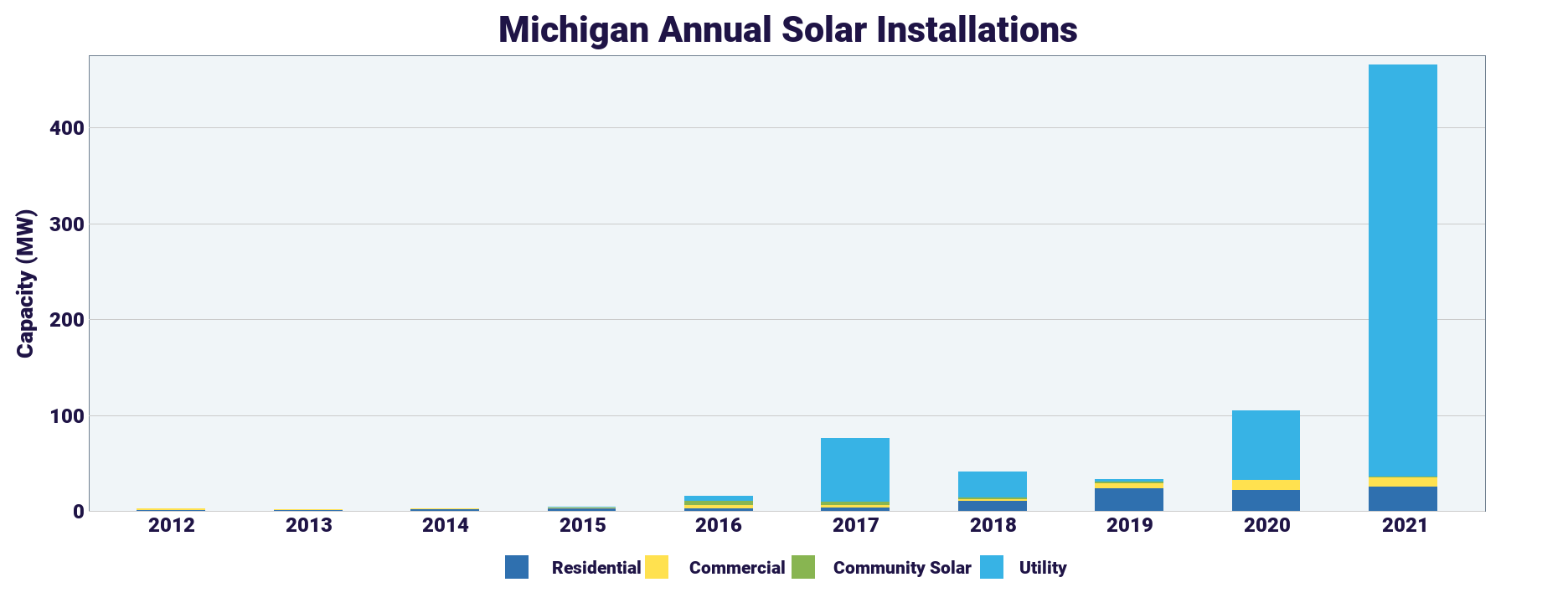It's coming quicker than people think. The solutions are there.
Navigation
Install the app
How to install the app on iOS
Follow along with the video below to see how to install our site as a web app on your home screen.

Note: This feature currently requires accessing the site using the built-in Safari browser.
More options
You are using an out of date browser. It may not display this or other websites correctly.
You should upgrade or use an alternative browser.
You should upgrade or use an alternative browser.
Our Solar/Alt Energy Future
- Thread starter Synthaholic
- Start date
- Sep 16, 2012
- 57,929
- 51,499
- 3,605


Michael Moore Presents: Planet of the Humans | Full Documentary | Directed by Jeff Gibbs
Intelligent folks don't support your fake solutions.
- Thread starter
- #3
Always nice when one of the moderators is also one of the biggest trolls on the site.
Yarddog
Diamond Member
- Jun 13, 2014
- 17,413
- 11,641
- 1,255
It's coming quicker than people think. The solutions are there.
thats a pretty small looking airport for all those panels. Or do they plug their planes into really long extension cords?
- Thread starter
- #5
View attachment 757001

Michael Moore Presents: Planet of the Humans | Full Documentary | Directed by Jeff Gibbs
View attachment 757002
Intelligent folks don't support your fake solutions.
Dont Taz Me Bro - is this an example of the trolling that you told me you won't tolerate?
Grumblenuts
Gold Member
- Oct 16, 2017
- 14,514
- 4,837
- 210
Somehow I don't think that's what MisterBeale was trying to say at all. By all accounts the film was made to spark controversy and productive discussion. It largely failed to do so because they got critical facts wrong and were otherwise sloppy as Michael Moore films have tended to be. Moore simply providing us with perspectives at odds with the corporate norms doesn't necessarily help anything. But it certainly does fuel conspiracy nuts' wet dreams.The film ends with Gibbs reflecting that "Infinite growth on a finite planet is suicide", imploring the audience to take back the environmental movement from billionaires and capitalists.
Grumblenuts
Gold Member
- Oct 16, 2017
- 14,514
- 4,837
- 210
thats a pretty small looking airport for all those panels.
The airport operates three passenger terminals and one cargo terminal with a total area of over 225,000 square metres (2,421,880 sq ft).
fncceo
Diamond Member
- Nov 29, 2016
- 42,726
- 35,314
- 3,615
The average Indian household uses 12kW/Day of electricity.
While the average American household uses around 30kW/Day
So, supplying power to 10,000 Indian homes would equate to only 4,000 American homes.
A town less than half the size of Tuscaloosa, AL or a third of the size of Longmont Colorado.
Add to that, Indians are used to daily brown/black outs that last hours every day. Known locally as "load shedding"
While the average American household uses around 30kW/Day
So, supplying power to 10,000 Indian homes would equate to only 4,000 American homes.
A town less than half the size of Tuscaloosa, AL or a third of the size of Longmont Colorado.
Add to that, Indians are used to daily brown/black outs that last hours every day. Known locally as "load shedding"
Grumblenuts
Gold Member
- Oct 16, 2017
- 14,514
- 4,837
- 210
From Planet of the Humans (Premiered July 2019) transcript:

More to come..
Two years later:
We can meet the energy requirements for 10 homes. Over a year. 15:55 (traffic humming) 15:57 - [Woman asking question] Will that be an incentive to put more solar on? 16:01 - [Nelson] Well, if you wanted to make all of the energy required for the city of Lansing over a year? 16:07 - [Woman asking question] Well, how about-- 16:08 - [Nelson] You'd have a solar array that was three miles by five miles. 16:11 - [Woman asking question] Right. But-- 16:12 - [Nelson] We're not gonna do that.

More to come..
Last edited:
Grumblenuts
Gold Member
- Oct 16, 2017
- 14,514
- 4,837
- 210
Ahem:While the average American household uses around 30kW/Day
Okay, per day. Never mind.In 2021, the average annual electricity consumption for a U.S. residential utility customer was 10,632 kilowatthours (kWh), an average of about 886 kWh per month. Louisiana had the highest annual electricity consumption at 14,302 kWh per residential customer, and Hawaii had the lowest at 6,369 kWh per residential customer.
Grumblenuts
Gold Member
- Oct 16, 2017
- 14,514
- 4,837
- 210
I'm no big fan of those gigantic windmills, especially on land, but that's what I meant by "sloppy." Man-on-the-street interviews are comedy, not journalism.
18:18 - [Jeff] And how long are these towers supposed to last? 18:20 - [Man] 20-something years, 20-- 18:21 - [Citizen] I know, it's just a nanosecond. 18:24 - [Jeff] 20 years? 18:25 - [Citizen] Oh, it's a nanosecond in the time of energy.
In terms of durability, wind turbines last an average of about 25 years.

Carbon Rivers has achieved 99.9% recycled glass fiber purity from different end-of-life waste streams like wind turbine blades. The complete elimination of contaminants, along with high recoverable fiber aspect ratio and performance allows recycled glass fiber to displace virgin fiberglass in different composite applications. The high purity also opens the potential for remelting—allowing recycled glass fiber to be incorporated into virgin fiberglass, thereby closing the material loop and creating a circular economy.
Photo from Carbon Rivers
Grumblenuts
Gold Member
- Oct 16, 2017
- 14,514
- 4,837
- 210
24:50 - [Announcer] This is the raw material chips are made of, sand. 24:53 - [Zehner] They don't use sand at all.
That should suffice.Most solar panels are made of silicon, which is the main component in natural beach sand.
Silicon is abundantly available, making it the second most available element on Earth.
However, converting sand into high grade silicon comes at a high cost and is an energy intensive process. High-purity silicon is produced from quartz sand in an arc furnace at very high temperatures.
Always nice when one of the moderators is also one of the biggest trolls on the site.
Or is it somebody gently taking the piss and/or puncturing pomposity ?
And doing it "kindly" .
- Thread starter
- #15
View attachment 757001

Michael Moore Presents: Planet of the Humans | Full Documentary | Directed by Jeff Gibbs
View attachment 757002
Intelligent folks don't support your fake solutions.
Two weeks ago MisterBeale removed an Aesops Fable I posted, saying I was trolling. Now look at him trolling.
USMB RULES FOR THEE BUT NOT FOR ME
- Thread starter
- #17
MisterBeale and Dont Taz Me Bro have gone quiet all of a sudden. All I'm looking for is an explanation why a moderator can troll people's threads but lowly members cannot. That's all. Live by your rules.
- Thread starter
- #18
This is a thread about solar and other alternative energy. It's not a thread for nutcase theories about how climate change is a hoax. There are plenty of threads for that.
- Thread starter
- #19
Fusion Fuel Green Plc is interesting. They're able to capture and utilize the thermal energy generated by CPV solar modules to enhance the efficiency of the electrolysis process and produce green hydrogen at cheaper costs.
- Thread starter
- #20
GEVO produces renewable fuels, specializing in sustainable airplane fuel.
Similar threads
- Replies
- 42
- Views
- 694
- Replies
- 29
- Views
- 409
- Replies
- 22
- Views
- 666
- Replies
- 50
- Views
- 517
Latest Discussions
- Replies
- 6
- Views
- 40
- Replies
- 1K
- Views
- 15K
- Replies
- 205
- Views
- 2K
- Replies
- 23
- Views
- 85
Forum List
-
-
-
-
-
Political Satire 8052
-
-
-
-
-
-
-
-
-
-
-
-
-
-
-
-
-
-
-
ObamaCare 781
-
-
-
-
-
-
-
-
-
-
-
Member Usernotes 469
-
-
-
-
-
-
-
-
-
-
